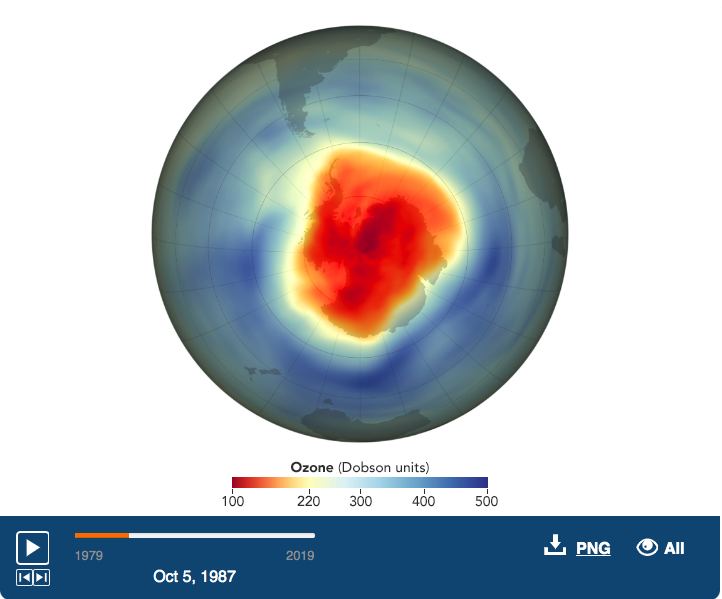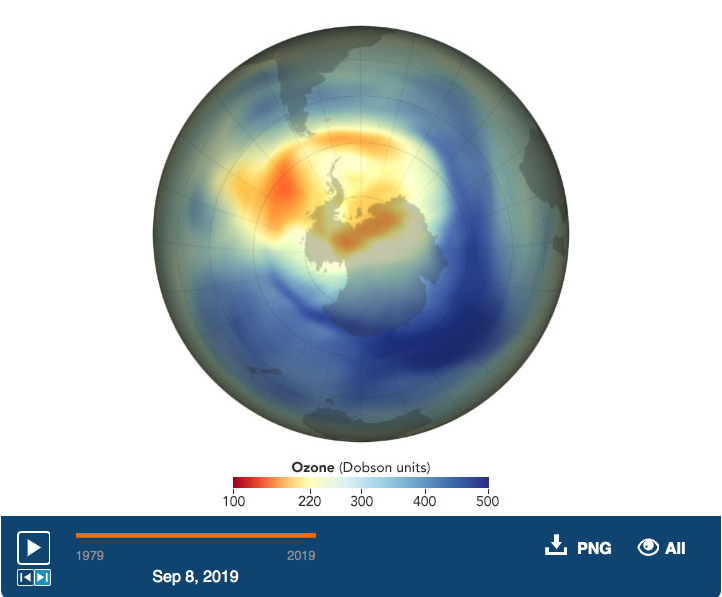Is ozone good or bad, and is there a “problem” with it?
You’ve probably heard of ozone before, and you might have noticed that it’s sometimes talked about as something good and sometimes as something bad, and that it also comes up in the context of a “problem” with the ozone layer. So what’s the story?
Let’s start with the good and bad. The ozone that exists naturally in the ozone layer is clearly good, because it protects us from harmful ultraviolet light from the Sun. However, ozone can also be produced closer to the ground through chemical reactions with the emissions from cars and industry. This ozone is bad, because it ends up mixed in with the air we breathe, and inhaled ozone can damage our lungs. Indeed, ozone is one of the main ingredients of air pollution and smog in cities. To summarize, ozone near the ground is bad because we can breathe it in, but at high altitudes (far higher than we live) it is good because of its protective effects.
This brings us to the “problem” you may have heard about with the ozone layer. In the 1970s, scientists discovered that certain human-made chemicals — especially those know as chlorofluorocarbons, or CFCs — can rise up to the ozone layer and destroy ozone within it. By the 1980s, this problem of ozone depletion (meaning a reduction in the amount of ozone in the ozone layer) was becoming quite serious. Indeed, there was even a “hole” forming within the ozone layer over Antarctica, meaning a region in which the ozone concentration was far below its normal values, allowing much more ultraviolet light to reach the ground. Fortunately, the discovery of these problems with the ozone layer led to global action that banned the use of CFCs. This global action has significantly helped the problem of ozone depletion, though it is still not completely solved.


Figure 1 – These two frames from a NASA video show the ozone hole over Antarctica in 1987 (left) and 2019 (right). Red indicates low ozone, and blue indicates normal ozone. Notice that the red “ozone hole” was quite dramatic in 1987, but it has recovered substantially. Click here to watch the full NASA video of change in the ozone layer from 1979 to 2019. Credit: NASA Earth Observatory.